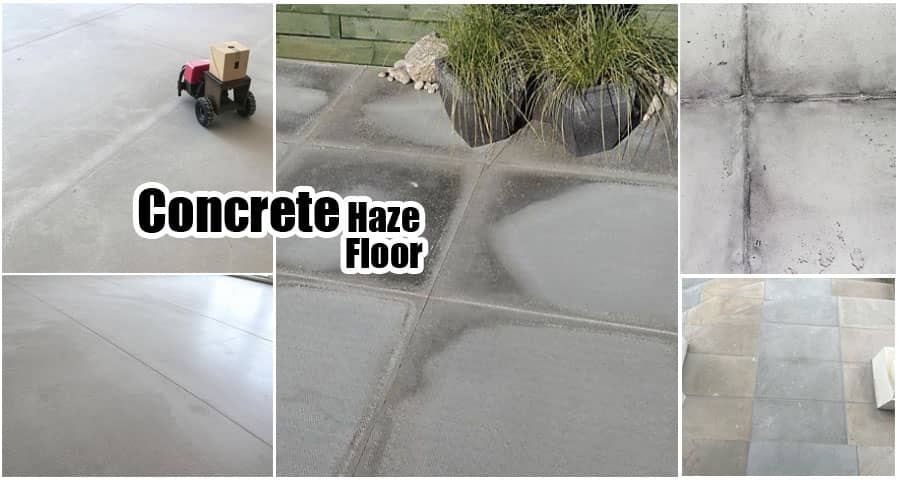What is Concrete Haze on a Concrete Floor?

Concrete haze, often referred to as cementitious or construction haze, is a common visual defect that appears on newly installed concrete floors. It typically manifests as a light, whitish or cloudy film over the surface, dulling its natural appearance. This phenomenon not only compromises the aesthetics but may also signal underlying issues in the curing, cleaning, or sealing processes.
Understanding Concrete Haze: Definition and Characteristics
Concrete haze is a residual film or deposit left behind on the surface of concrete after installation or treatment. It may appear:
- Milky or cloudy under certain lighting
- Powdery or chalk-like when rubbed
- Gloss-dulling especially after sealing or polishing
This haze may become visible within hours or days post-installation, often worsening over time if not treated promptly.
What Causes Concrete Haze?
The formation of concrete haze can stem from various mechanical, chemical, and environmental factors. Here are the most common causes:
1. Inadequate Cleaning After Grouting or Sealing
When concrete is grouted, polished, or sealed, fine residues like cement dust, silica particles, or cleaning agent films may not be fully removed. These microscopic particulates dry into a haze layer if the surface isn't properly rinsed and dried.
2. Over-Application of Sealers or Waxes
Applying too much acrylic, epoxy, or polyurethane sealer can lead to improper curing. When sealers trap moisture or react with compounds on the surface, hazy blotches or clouding may appear.
3. Reaction with Hard Water or Cleaning Agents
Using hard water, which contains high levels of calcium and magnesium, or alkaline cleaning products can result in mineral deposits forming on the concrete. This often appears as a hazy white film that resists standard mopping.
4. Efflorescence
A very common culprit, efflorescence is the migration of soluble salts to the surface of concrete. When water evaporates from within the slab, it leaves behind white, powdery salt crystals that contribute to haze formation.
How to Identify Concrete Haze Accurately
Early and accurate identification of concrete haze is vital. Here's how to determine if your floor is affected:
- Visual Inspection: Look for dullness, inconsistent coloration, or cloudy areas under direct light.
- Touch Test: Rub your finger over the surface. If you feel a gritty or powdery residue, it's likely a haze.
- Water Drop Test: Drip water on the surface. If it beads up rather than penetrating, the haze may be from an over-applied or poorly cured sealer.
Effective Methods for Removing Concrete Haze
Depending on the cause and severity, haze removal can involve simple cleaning techniques or specialized treatments. Below are the best-practice methods:
1. Mechanical Cleaning
Use a rotary floor machine with a white pad to gently buff the surface. This can effectively lift dry haze particles without damaging the concrete.
2. Acid-Based Cleaners (With Caution)
Mild acid-based cleaners such as diluted phosphoric or citric acid can dissolve mineral-based hazes, especially those caused by efflorescence. Always:
- Pre-wet the surface
- Apply the acid solution using a pump sprayer
- Scrub with a non-metallic brush
- Rinse thoroughly with clean water
Warning: Avoid muriatic acid unless absolutely necessary and always wear proper PPE.
3. Commercial Haze Removers
For polymeric or sealer-related hazes, pH-neutral or specialty haze removers are more effective. Brands like Prosoco, Lithofin, or Fila offer products designed specifically to remove haze without etching or discoloring the concrete.
4. Sealer Stripping
If the haze is caused by over-applied sealer, chemical strippers may be required to remove the sealer entirely. After stripping, rinse and allow to dry before reapplying a thin, even coat of a high-quality sealer.
Preventing Concrete Haze in Future Installations
1. Proper Surface Preparation
Ensure all dust and residue is thoroughly vacuumed or cleaned before sealing. Avoid cross-contaminating with dirty mops or buckets.
2. Controlled Use of Sealers and Grout
Always follow manufacturer-recommended dilution ratios and curing times. Over-application of sealers or improper mixing of grout can introduce haze.
3. Avoiding Hard Water and Harsh Chemicals
Use softened water or distilled water for cleaning. Avoid high-pH cleaners or unapproved detergents that may react with the concrete.
4. Routine Maintenance
Implement a regular floor maintenance plan using neutral cleaners and microfiber pads. Periodic deep cleaning will keep residues from accumulating into visible haze.
Impacts of Leaving Concrete Haze Untreated
Failing to address concrete haze can result in more than just cosmetic issues:
- Reduced traction, leading to slip hazards
- Compromised surface integrity due to trapped moisture
- Staining and discoloration under UV or foot traffic
- Reduced property value due to poor floor presentation
Timely removal and preventive maintenance are essential for both aesthetic longevity and structural health of the concrete.
Professional Haze Removal Services
In severe cases or for large commercial spaces, hiring a concrete restoration professional is the most efficient path. They possess specialized equipment, advanced chemical treatments, and the technical expertise to restore floors to their original clarity without damage.
Conclusion
Concrete haze may seem like a minor issue, but its implications for floor durability, safety, and aesthetics are significant. By understanding the causes and employing proven cleaning and preventive measures, property owners and contractors can ensure that concrete floors retain their intended beauty and function. Whether dealing with new construction or legacy floors, a proactive approach to haze management is a vital component of long-term surface care.
Please watch the following short video for Concrete Haze on a Concrete Floor
